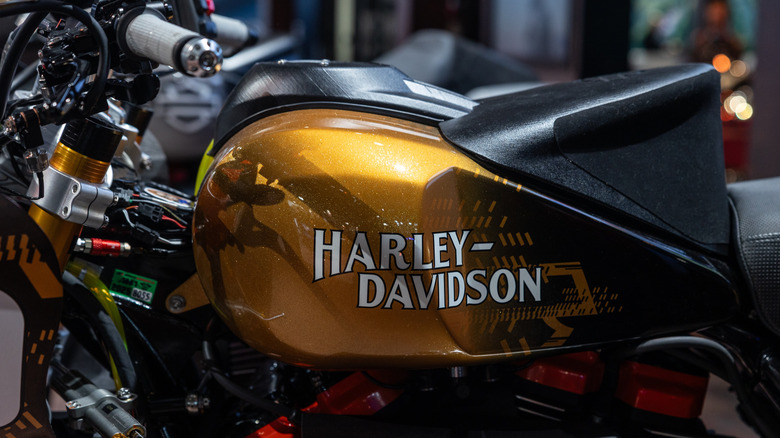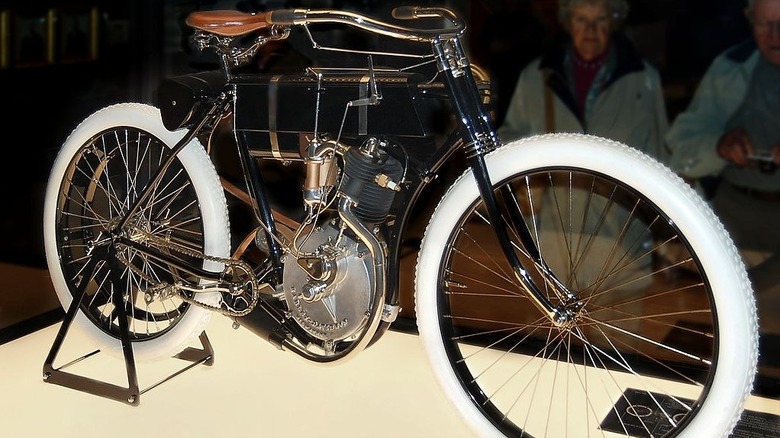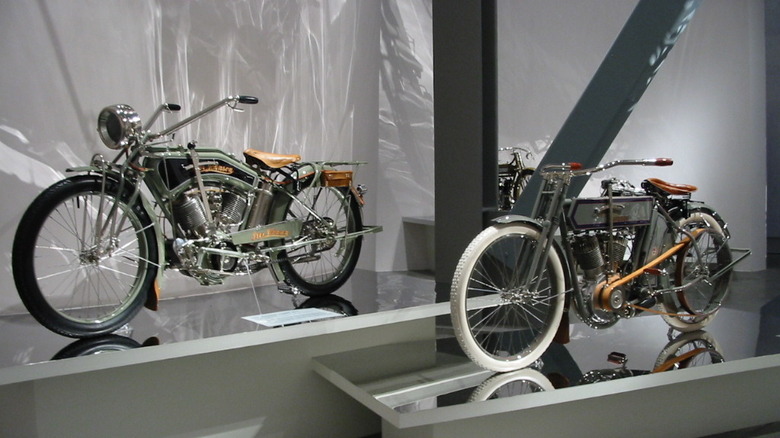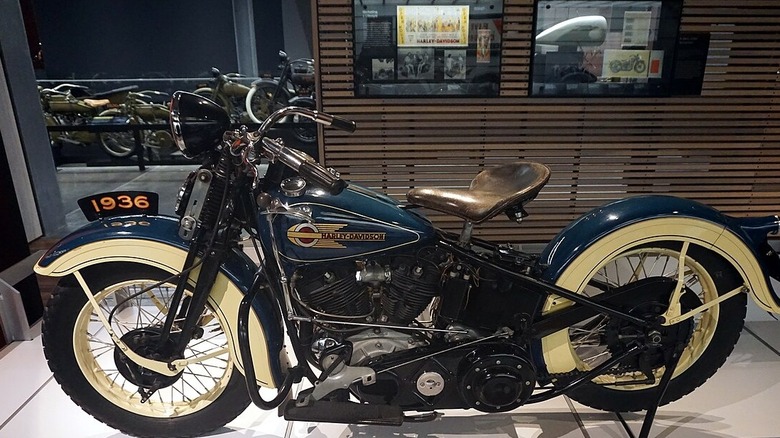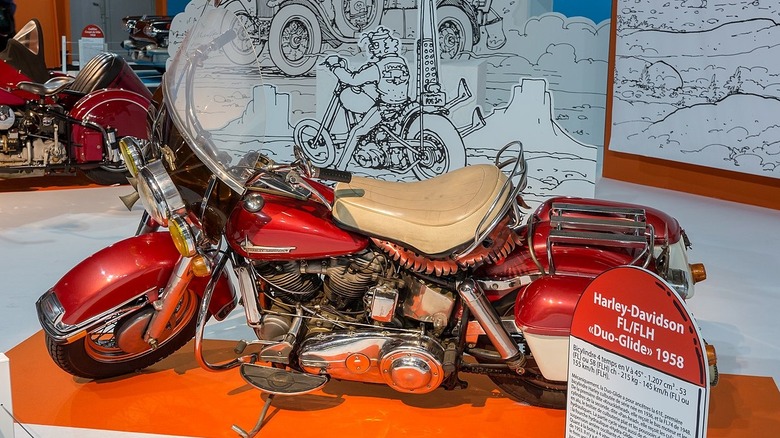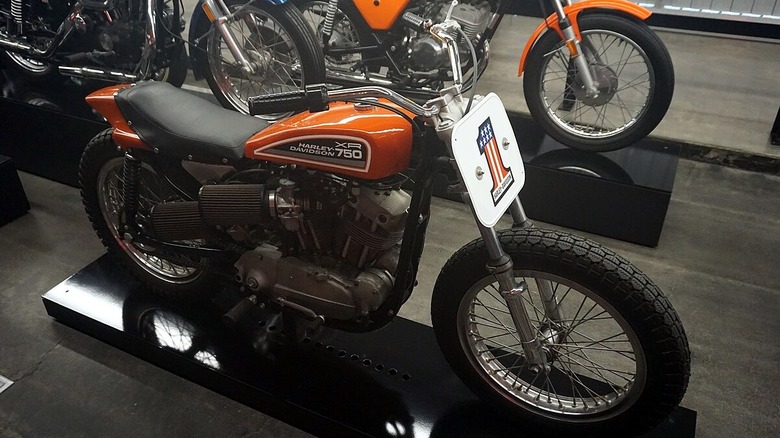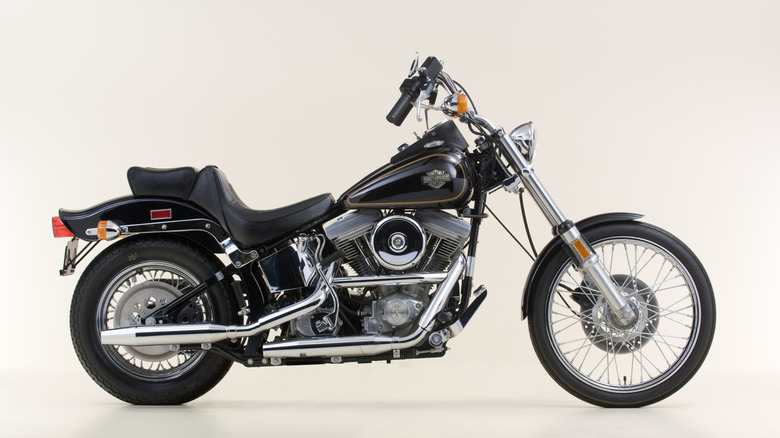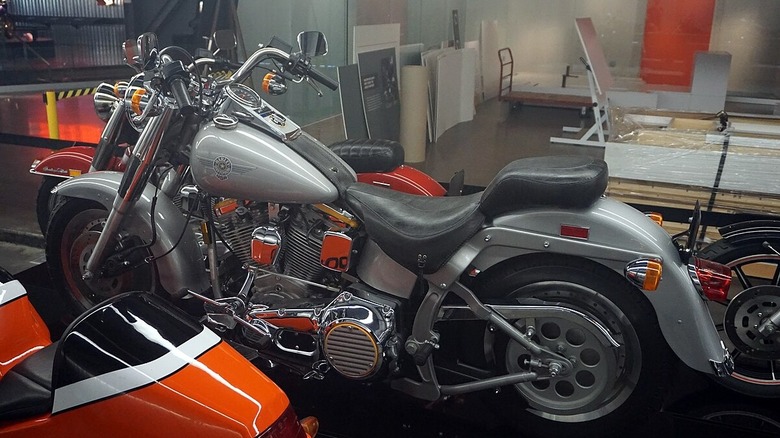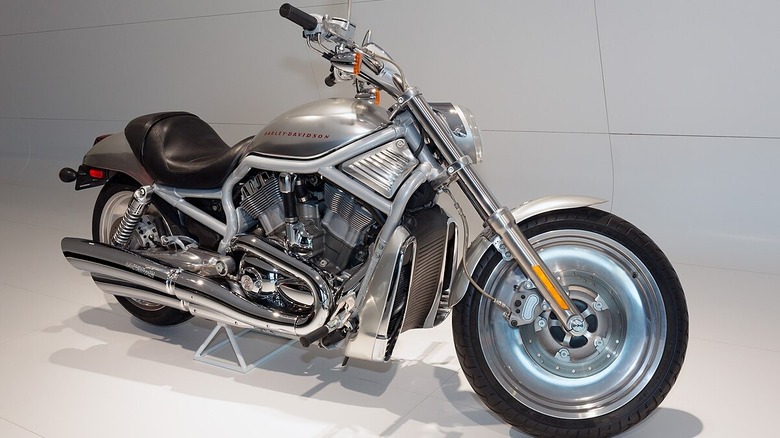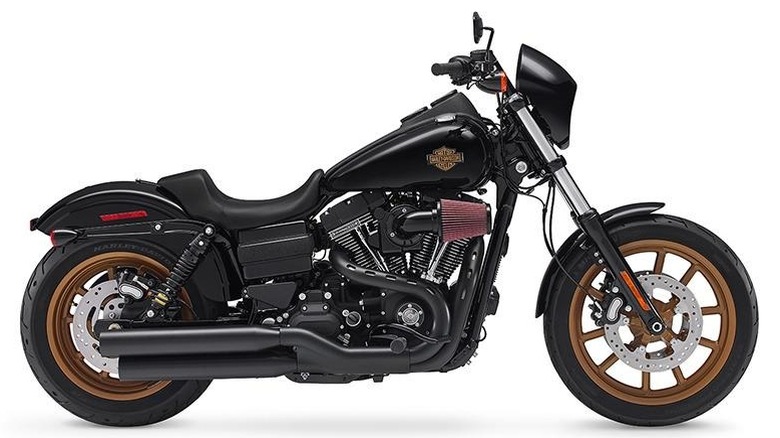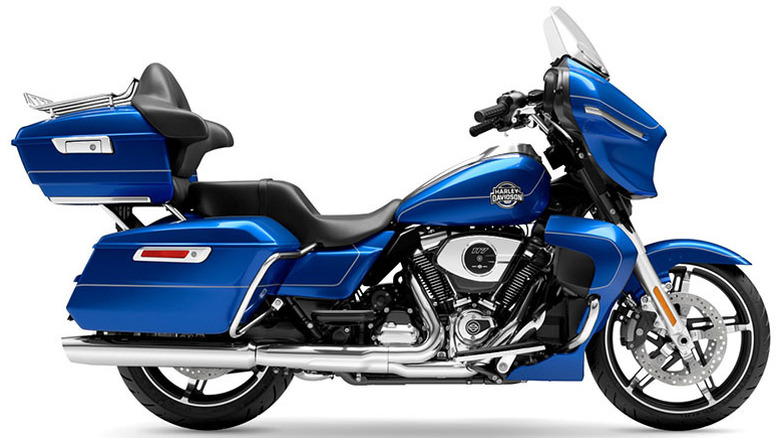From The 1900s To Today – The Most Iconic Harley-Davidsons From Each Decade
Harley-Davidson's history is as storied as that of American manufacturing. Its story begins in Milwaukee, Wisconsin, in 1903, when William Harley, along with his friends, a trio of brothers named Walter, Arthur, and William Davidson. When Harley proposed building a motorcycle, the group agreed his name should go first on the marquee.
The first Harley-Davidson factory — a 10 by 15 foot shack — went up at the request of William Davidson's father, to move the project out of his basement. The boys developed the prototype Harley-Davidson motorcycle, adding an extension to the backyard factory as they went. In 1907, the future icon was incorporated as the Harley-Davidson Motor Company.
With over a century of operation, Harley is deeply ingrained in the fabric of Americana. Its unique adherence to classic engineering and design cues in modern bikes recalls its outsized place in history. Each decade revealed something new, not just about Harley, but also about the tumultuous and fascinating course of the 20th century.
We're taking a long view of Harley-Davidson history, selecting one motorcycle from each decade to represent the brand. Decades-old motorcycles won't hold a candle to modern offerings in terms of performance, so we're evaluating cultural impact, design language, evolution, revolution, and historical significance to select the most iconic Harley-Davidsons from each decade.
1905 Model 1
It's tempting to label the Model 0 — built in a backyard with elbow grease and American grit — as the iconic model from Harley's inaugural decade. While the story's romance appeals, history is littered with unknown and unheralded backyard prototypes. Harley-Davidson's coming-out party was in 1905 at the launch of the Model 1.
The Model 1 used a 24.7 cubic inch (405cc) single cylinder inlet-over-exhaust engine with a belt drive (a trait Harleys retain today). It was not all that advanced from the prototypes, but it presented a solid package. It could hit speeds of up to 40 mph — absolutely gobsmacking in 1905. Before its official debut, the Model 1 took fourth place in a motorcycle race at the Wisconsin State Fair Park. We can't help but wonder who built the winning three.
The buzz for the Model 1 was sufficient that Carl H. Lang became the first Harley-Davidson dealer when he sold three motorcycles out of his Chicago business in 1905. The sales official put Harley-Davidson on the map, which would soon be crowded with competing Midwest concerns as the American auto industry ignited. Harley-Davidson was primed to race into the 20th century astride the Model 1.
1911 Model 7D
Harley has famously stuck to the V-Twin motorcycle engine configuration come hell or high water — that's all down to the success of the 7D. With early models barely evolving past bicycles with engines, the Harley-Davidson Model 7D didn't just set Harley on a path to solvency as one of its most successful bikes of the decade. Adding another cylinder paid money dividends. It settled displacement at about 50cc and provided a counterbalance lacking in thumping singles. Smoother and more comfortable operation came with the bonus of extra power and an addictive, reassuring underseat throb. As Harley's first successful V-twin, the 1911 Model 7 set the tone for a century of history to come.
Harley's distinctive styling and design began to emerge in the Model 7D. Restored models present as elegant and gentlemanly conveyances — something on which one could go a-courting upon a spring evening. If its place in Harley's evolutionary chart doesn't convince you, consider Mecum's position that the 7D is not just the most iconic model of its decade, but one of the most important Harley-Davidsons ever built.
1925 Model JD
The Roaring '20s propelled society into high gear, and proved to be a tumultuous decade for the world's largest motorcycle manufacturer. America's road networks and automobile culture were growing, but a post-war economic slump loomed. Harley's solution was offering increasingly powerful and comfortable motorcycles, including the 1925 Model JD.
The first half of the 1920s saw engineers updating and upgrading various components for popular models, such as the Model J, which was originally designed for military service in 1915 and continued to be produced in civilian form until 1929. The 74-cubic-inch JD was launched in 1922, and by 1925, engineers had time to iron out the teething problems and introduce upgrades.
The JD featured firsts for Harley, including the teardrop gas tank, a stout frame seated 3 inches lower to the ground, broader wheels, and an option for either a 61- or 74-cubic-inch V-twin engine. The JD was the culmination of everything Harley had learned about reliability and competition on the battlefields of Europe, roadways of America, and markets of the world.
Both the J and JD models lasted into the late 1920s. By 1929, both had ceased production. The '20s had roared indeed, but the 1930s held new challenges for Harley. Rising competition from Indian and other manufacturers set the stage for a fierce rivalry during the golden age of motorcycling.
1936 Harley Davidson EL Knucklehead
Indian was slated to be Harley's arch-enemy. The Springfield, Massachusetts, based manufacturer opened its doors in 1901 — a full two years before the Davidson patriarch evicted his sons' project from the basement. By the 1930s, the two firms were fierce competitors, and the exigencies of the Great Depression intensified the rivalry to a fever pitch, one that gifted us the 1936 Harley-Davidson EL "Knucklehead."
A new overhead-valve design sent Harley ahead in its technology race with Indian, and distinctive rocker boxes reminiscent of knuckles inspired enthusiasts to dub the engine the "knucklehead" — now a verified part of the motorcycling lexicon. A glance at the engine reveals a recognizably Harley-Davidson. A gleaming chrome air filter cover, 45-degree cylinder towers with cooling fins, and distinctive branding on the fuel tank all scream modern Harley. But it is the Art Deco styling that makes the EL stand out as an icon.
The rigid frame and rugged leather remind viewers that the Wild West era was really all that long ago for the designers of the mid-1930s. Harley-Davidson's reputation for Americana is secure now, thanks in no small part to the EL Knucklehead and its siblings, which brought mobility to the masses.
1942 WL/A Liberator
Harley-Davidson's war machine is iconic for any number of reasons. Harley sent a prototype to Fort Knox, Kentucky, in 1939. The WLA was designed to the specifications of an American military complex anticipating the Second World War. The W engine code indicated the 45 cubic inch V-twin Flathead; the L marks it as a high-compression engine, and the A meant it was intended for use by the Army. Every Army model produced after Pearl Harbor was stamped as a 1942, regardless of the actual year it was produced.
The WLA earned the nickname Liberator on the battlefields of World War II. By the end of the conflict in 1945, Harley-Davidson had produced approximately 90,000 battle bikes, which served as everything from communication transports to scout vehicles to machine gun platforms. Even the Navy and Marine Corps used them. Over 30,000 were shipped to the Soviet Union under the Lend-Lease Act. Thousands of service members from many nations returning home after the war did so with fond memories of the WLA as a rugged and reliable combat companion.
Harley-Davidson shrewdly turned this situation to its advantage by offering a civilian version. The WL model was produced and sold until 1952. The Panhead arrived on the scene in 1948, but the WL/A was the primary Harley-Davidson motorcycle of the 1940s. Close your eyes and picture an Army bike, and you're probably imagining a WLA. It introduced thousands of Americans to motorcycling and laid the groundwork for Harley-Davidson to become a cultural icon. And most importantly, it made this list, cementing its place in history.
1958 FL Duo-Glide
The 1950s incubated two major bikes with different missions. The first-ever Harley-Davidson Sportster hit the road in 1957 with a mandate for performance, but another model just a year later had a much larger impact. The 1958 FL Duo-Glide set Harley up in the touring market once and for all. The Hydra-Glide introduced hydraulic front shocks, but the Duo-Glide added a rear swingarm softened by a coil-over shock system. Harley's infamously kidney-busting rigid-frame bikes, with mere seat springs for a rear suspension, were finally dead — or at least had one foot in the grave.
The 1958 FL Duo-Glide was typical of Harley in terms of the powertrain. Buyers could opt for one of two 74 cubic-inch (1,200cc) V-twin engines, making between 53 and 60 hp. Though conventional wisdom today is that lighter is better, the FL's considerable 600-pound road weight contributed to its comfort. Motorcycling had long been a rattling, bone-jarring experience. The healthy mass of the FL settled vibrations and, combined with its dual suspension, smoothed out some of the bumps and bruises, inviting riders to enjoy more extended tours on their motorcycles.
While the Sportster has long since lost the performance battle to European and Japanese competitors, Harley-Davidson's cruising and touring bikes remain world-class, known for luxurious amenities, powerful engines, and a smooth, gliding road feel. The 1958 FL Duo-Glide made it all possible.
1968 Easy Rider Customs
Motorcycling underwent significant changes during the tumultuous countercultural movements of the 1960s. The advent of outlaw organizations like the Hells Angels and Mongols biker gangs gave Harley a rough-and-tumble, free-roaming image. "Easy Rider" starring Dennis Hopper and Peter Fonda hit the silver screen in 1969. Embarking on a road trip across the American Southwest, the pair represented the zeitgeist of a dying decade.
The Captain America and Billy bikes ridden by the stars shot to pop culture fame and have remained ever since. They may be the most famous Harley-Davidsons of all time, let alone the 1960s. Many people who have never seen the film could pick the bikes out of a lineup for their sheer ubiquity. The fact is, the most iconic Harley-Davidsons of the 1960s are from the 1950s, technically.
Part of Harley's freewheeling image came from endless customization. Harleys, more than any other motorcycle of the 1960s, were expressions of their owners. Some, like the "Easy Rider" customs, got the complete hot rod treatment. Motorcycle fabricators Benjamin Hardy and Cliff Vaughn stripped down 1950s Panheads to their bare bones. They built these on-screen expressions of the 1960s from the ground up, creating 1968 model year Harley-Davidson custom motorcycles. The rest is pop culture icon history.
1975 XR-750
Though its pop culture cache was on the rise, Harley hadn't gone full Hollywood yet. It was also working hard on performance. The 1969 Honda CB750 is recognized by many as the world's first superbike. Honda kicked off a performance war as more Japanese imports landed on American shores. Before the issue settled into the high-revving in-line four-cylinder engine configuration, Harley's sportbike was the XR-750.
In the early 1970s, changes to the American Motorcycling Association's Grand National Championship rule book favored Harley. The Sportster had been around since the 1950s, so the company put a downsized and tuned-up version of its engine into the XR-750. It featured a 45-degree V-twin overhead valve engine paired with a four-speed transmission. The package provided 90 horsepower for competitive riders on the AMA circuit.
The XR-750 became one of the most successful race bikes of all time. In a half-century of racing, it has achieved the top of the podium in 27 of 38 AMA Grand National Championships. Only 530 sport bikes were built, making them rare and collectible examples of Harley lore. If that wasn't enough to cement their icon status, consider that the XR-750 was the motorcycle of choice for stuntman Evil Knievel's wildest shenanigans.
1984 FXST Softail
By the early 1980s, Harley was dogged by the fallout of its troubled AMF years and well-earned reputation for failing to embrace new technology. Enter the 1984 FXST Softail. Harley designers and engineers used the FXST as a platform for new tech disguised behind Harley's signature designs. For starters, the Softail was cheekily named.
The rigid frame was plainly visible behind the seat. However, a peak behind the curtain revealed a cleverly hidden pivoting rear linkage providing all the glide of modernity with the stiff, classic look of a rigid bike. The Duo-Glide blessedly rid Harley riders of rigid-frame bikes, but the Softail was what brought the look back.
The Softail also had the honor of being one of five models that year to receive the all-new Evolution engine. Harley's prayer for stopping its skid of poorly-built engines came to an end with the Evolution. The 1984 model year represented the introduction of the Softail line in the FXST — a lineage that continues today, but also the engine that many credit with saving the company.
1990 FLSTF Fat Boy
The Harley-Davidson Fat Boy is among the frontrunners for the title of Harley's most beloved bikes. That could be because it was partially designed by Willie G. Davidson himself. It may be because it represents Harley's resurgence in the 1990s. Maybe it's because Arnold Schwarzenegger jumped one on the silver screen in 1991's "Terminator 2." There's no way the bike would have survived that particular beating in real life, but nonetheless, the Fat Boy gets a lot of well-deserved love — regardless of the reason.
The project was slated to be special from the start. Harley put the bike through an exhaustive two-year testing process, gathering customer feedback, and showcased it at Daytona Bike Week twice before its release. When it finally hit the road, it featured silvery paint and classic cruiser styling, powered by a 1,337cc V-twin engine that produced 67 hp at 6,000 rpm and 72 lb-ft of torque at a rumbly 2,350 rpm. The Fat Boy was making a point about what Harley was capable of achieving on the eve of its centennial. The FLSTF model remained in production until 2017, when it was replaced by the FLFBS and FLFB Fat Boy models.
2001 VRSC V-Rod
This one's controversial. Harley fans tend to have traditional taste, and something as unconventional as the V-Rod was bound to be polarizing. To begin with, the engine was liquid-cooled — anathema to Harley's long tradition of air-cooled powerplants. Secondly, and this may be even harder to swallow, Porsche helped design it.
The early aughts saw Harley trying new angles. Long maligned for clinging to the old ways, the bar and shield decided to see what would happen if they built a modern, up-to-date bike the Harley way. Along with radiators, the 1,130cc V-Twin Revolution (not to be confused with the Evolution) received electronic fuel injection and produced 115 hp, all nestled within a tubular frame. The result was a mass of menacing muscle that turned heads.
Unlike any Harley that had gone before (or since), everybody may not have loved the V-Rod, but it is undoubtedly the most recognizable Harley-Davidson, if not the most recognizable production motorcycle, of the early 2000s. The V-Rod went the way of the dodo in 2017 after an impressive production run.
2016 Low Rider S
The Softail gets a lot of love, but Harley's Dyna line deserves time in the spotlight. With a more traditional rear suspension akin to that of a Sportster, the Dyna was Harley's meaty full-sized cruiser. Introduced in 1991, the line was discontinued in 2017 after a long and successful life that delighted thousands of Harley riders. The 2016 Low Rider S is one of the final Dynas ever produced.
Critics praised the Low Rider as one of Harley's greatest ever handling motorcycles. Along with compliments for its upgraded engine, suspension, and brakes, there's not much more to love about a motorcycle. The Low Rider S was no overencumbered touring wagon. It was a lean, mean street machine with no-nonsense lines and a competent, classic stance. Harley engineers knew from the start that it was to be a performance machine. Plaudits aside, the Low Rider S is the siren song of Harley Dyna, and its Screamin' Eagle Twin Cam 110 was among the last of the Twin Cams before the Milwaukee-Eight arrived in 2017.
2025 Street Glide Ultra
This is it. The cutting-edge (of mass production) motorcycle that all of Harley-Davidson's great gobs of history and experience can produce. The 2025 Street Glide Ultra is "big and heavy and not that fast," according to Cycle World. But that could be said for many Harley-Davidsons.
The 2025 Street Glide Ultra is a distillation of Harley's journey through the decades. At its core beats the beloved V-twin heart, in the form of a 117-cubic inch Milwaukee Eight engine that produces 105 hp and 130 lb-ft of torque. The rear suspension includes outboard emulsion shocks. It weighs 866 pounds. It's a road-hugging interstate-gobbling classic cruiser, with enough room for cargo for you and your passenger to forget the world for a while. It costs a lot of money, and it's beautiful. Not everyone will get it, and not everyone has to. But the ones who fell in love with Harley's potato-potato-potato patter and all-American history do.
